John Hurrell – 31 August, 2016
This is not the sort of exhibition that needs to be carefully explained, because it either hits you on an emotional visceral level or else leaves you cold and baffled. Yet it is hard to imagine anybody genuinely flummoxed, especially when they are standing in an art gallery where such experiences are common - but perhaps they'd insist on a metaphorical layering, a detailed account of precise symbolism that is not forthcoming: a closed and final exegesis that they want neatly packaged.
In this startlingly dramatic installation by the Korean artist Jae Kang (resident in Auckland and a keen cultivator of tomatoes) the Te Uru building is mysteriously invaded by root-like polyethylene irrigation equipment - evocative concertina tubes, serpentine hoses and drip lines - hairy black clusters that emerge from the top floor ceiling in two locations to descend down through a gallery, winding corridor and the elliptical space enclosed by the angular, doglegging internal staircase. The intertwined cascading black lines finish up on the ground floor of the entrance and shop.
Surreal, sinister and (for most) amusing, Kang’s sprawling project is highly sensual and rich in associations. Gurmon Sup (black forest) also has thematic similarities to the well known Alvin Pankhurst painting, Maybe Tomorrow, owned by Dunedin Art Gallery, and winner of the 1973 Benson and Hedges Art Award, with its Triffid-like growths advancing through a lavishly wallpapered sittingroom and central fireplace. The suggestion of something living within the gallery walls is also linked to the sculptures of the Brazillian artist, Adriana Varejāo, where green-tiled partitions seem filled with meat and viscera.
Kang’s version though, avoids any suggestion of being a Duchampian readymade (if you thought that) by its irrigation accessories clearly not being brand new. Dirt is conspicuous in its grooves as an indicator of recycling; traces of smeared mud are crucial as signs of an eco-friendly, non-wastage sensibility.
Like an earlier inflatable Seung Yul Oh installation, Gurmon Sup has a wonderful way of exploiting the spiralling centripetal characteristics of the Te Uru architecture, especially when thought about in vertical cross-section. The Seung Yul Oh show had a strong maternal presence, like a massive, soft, yolk-coloured breast, but this show is dark, fragmented and penetrating. This can be seen as pertaining to hairy roots, grasping octopi, and perhaps nasty scampering millipedes. And although the photographs above feature the main room at the top (with its clusters, stacks and droopy protuberances) the most interesting aspects of the exhibition are around the yellow stairway: when you are looking down or up. The show really seems to have invaded the building’s core.
This is not the sort of exhibition that needs to be carefully explained, because it either hits you on an emotional visceral level or else leaves you cold and baffled. Yet it is hard to imagine anybody genuinely flummoxed, especially when they are standing in an art gallery where such experiences are common - but perhaps they’d insist on a metaphorical layering, a detailed account of precise symbolism that is not forthcoming: a closed and final exegesis that they want neatly packaged.
A walk-through immersive drawing on four floors, it displays graphic and sculptural sensibilities combined.
John Hurrell
Recent Comments
Rob Hanks
Well said... I wish you'd written the editorial on this installation for the 2016 Spring issue of Artnews NewZealand magazine.
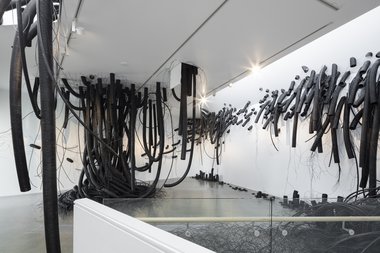
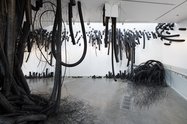
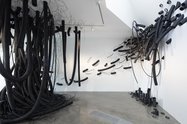
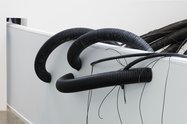


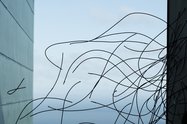
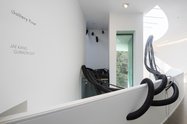
 Advertising in this column
Advertising in this column Two Rooms presents a program of residencies and projects
Two Rooms presents a program of residencies and projects



This Discussion has 1 comment.
Comment
Rob Hanks, 8:43 a.m. 1 September, 2016 #
Well said... I wish you'd written the editorial on this installation for the 2016 Spring issue of Artnews NewZealand magazine.
Participate
Register to Participate.
Sign in
Sign in to an existing account.